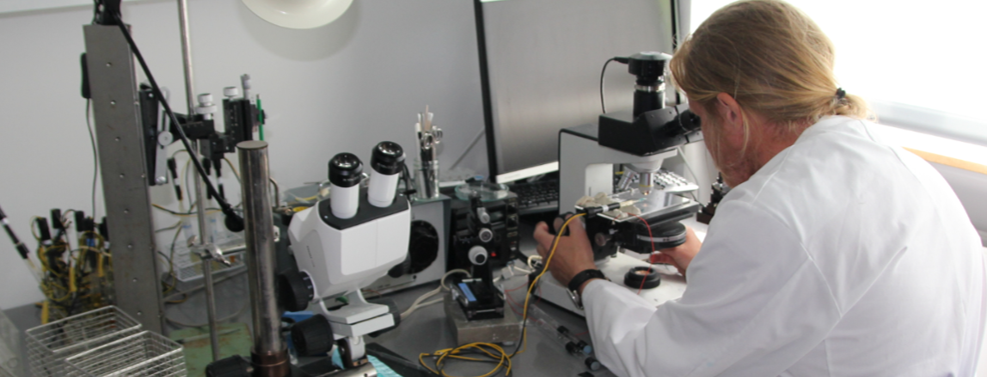In the sensor laboratory, we are making electrochemical micro-sensor for the detection of dissolved gas or any other molecule that we are interested in.
Electrochemical sensor signal is generated based on the oxidation/reduction of interest molecule in the electrode. We are making a developed version of Clark type gas sensor, which is also known as an amperometric sensor that produces an electrical current as a function of the analyte concentration.
We specialize in making sensors down to micro-level scale (0-100 micrometer). The micro-scale sensors allow more sensitive measurements and better resolution results on analyte concentration profiles in the environment.
Professor Niels Peter Revsbech and his group has for many years been globally leading in the development of sensors for environmental analysis. Among these are sensors monitoring the concentration of:
Most of the sensors are used for the analysis of wastewater. The N2O sensor is commercial available and applied and used in about 200 wastewater treatment plants world-wide. The work on the sensors has resulted in several awards, latest in 2013 where the work was honored the Grundfos Award.
Accurate on-line and real-time analysis of NO2- would be extremely beneficial for achieving the best, most energy efficient, and least N2O emitting process.
Scientific focus is being dedicated to improve the present NO2- biosensor aiming for the long-term stability requirement needed for routine wastewater monitoring.
New CO2-sensor has reached Proof of Concept
A new CO2 sensor has reached advanced Proof of Concept and are currently undergoing additional testing focusing on achieving a shorter response time and even better long term stability. The continued improvement of the CO2 sensor will be done in collaboration with The Interdisciplinary Nano Science Center at Aarhus University.
VFA-Sensor
Enhanced control and monitoring of the VFA in the activated sludge could lead to better control of phosphate removal. Intensified research in the Centre for Water Technology will allow further development of the VFA sensors improving and advancing the process of biological phosphate removal in activated sludge systems.
